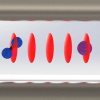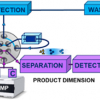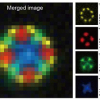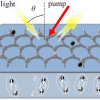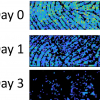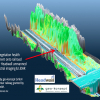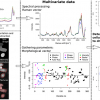Spectroscopy News
A vis/NIR spectrometer developed by EU researchers allows food producers to better monitor their products for the presence of acrylamide.
Researchers of the University of Basel have developed a new method with which individual isolated molecules can be studied spectroscopically without destroying the molecule or even influencing its quantum state.
A number of awards are presented at each annual Pittsburgh Conference honouring scientists who have made outstanding contributions to analytical chemistry and applied spectroscopy. We report here those directly involved in spectroscopy.
LC-MS/MS enables analysis of a wider range of hormones from whales and a more reliable pregnancy test.
A new research project in partnership between academia, companies and the Netherlands Forensic Institute to develop ways to chain analytical techniques together to gain complementary information.
Using cryogenic, ultrahigh-vacuum TERS and fine-tuning the highly localised plasmon field at the sharp tip apex has reduced the spatial resolution to 1.5 Å
Researchers have developed a THz amplifier based on a graphene sandwich which may offer significant improvements over current options.
Scientists at the Laboratory for Attosecond Physics have developed a unique laser technology for the analysis of the molecular composition of biological samples.
An experimental fingerprint detection approach can tell whether an individual has actually consumed cocaine or simply handled it based on the presence of a metabolite.
Researchers working at the SOLEIL synchrotron facility have observed hydrogen in its metal phase for the first time.
Mass spectrometry imaging is offering a first step in determining the age of fingerprints from the degradation of triacylglycerols.
Metabolic diseases such as diabetes and obesity are ever more common globally. In addition to genetic disposition, lifestyle contributes strongly to their prevalence. Precise monitoring methods are needed in order to, for example, evaluate how a change in diet or exercise affects disease and its metabolic characteristics.
Chirped-pulse Fourier transform millimetre-wave spectroscopy has been used to detect the extremely short-lived transition state that occurs at the initiation of chemical reactions.
There has been no “universal” straightforward technique that provides a full characterisation of microplastics. A new ICP-MS method looks like providing a solution.
The state of thrombocytes in the blood of patients with cardiovascular diseases can be quickly evaluated using surface-enhanced Raman spectroscopy (SERS).
Many spectroscopic techniques have been used in attempts to develop a practical non-invasive glucose monitor. Will Raman spectroscopy be the answer?
Headwall BVBA, Belgium and geo-konzept of Germany have announced the formation of a Centre for Hyperspectral Remote Sensing Europe (CHRSE).
Quantitative phase microscopy and Raman spectroscopy provide a label-free way to extract biomarkers based on cellular morphology and intracellular content.
A state-of-the-art fingerprint detection technology can identify traces of heroin on human skin, even after someone has washed their hands, and can discriminate between an individual who has used the drug or shaken hands with someone who has handled it.
FT-IR spectrometer being used on-board all-women sailing voyages investigating ocean plastic pollution causes and solutions.


